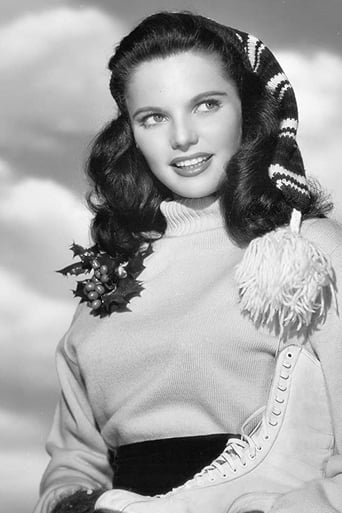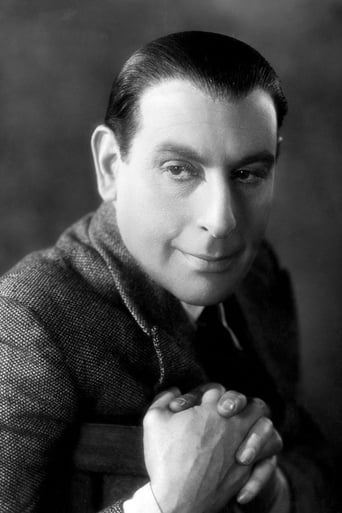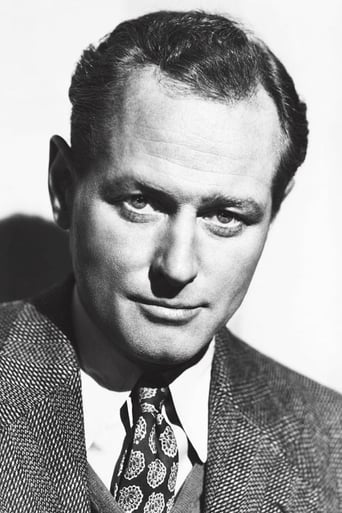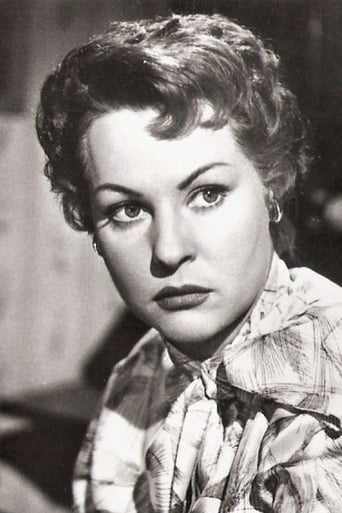Konterr
Brilliant and touching
Spoonixel
Amateur movie with Big budget
Ava-Grace Willis
Story: It's very simple but honestly that is fine.
Stephanie
There is, somehow, an interesting story here, as well as some good acting. There are also some good scenes
mark.waltz
From fancy French hotels to the mountains of Monaco, this action packed adventure involves religious symbols of healing, human greed and one man's determination to stop evil from catching up to him no matter what it takes. There are certain movies where it is plainly obvious from the opening credits who the hero is, and who the villain is. Obviously, Glenn Ford is the good guy, framed for murder simply because he stumbled upon the mystery of the green glove and got stuck with it. Now, it's his goal to get it back to the mountain top church where the bells have stopped ringing because of its theft. By accident, he hooks up with innocent Geraldine Brooks, all the while trying to outwit evil nobleman George MacReady, up to Hus usual sinister tricks, and determined to prevent Ford from completing his mission. Sometimes good, sometimes bad, Sir Cedric Hardwicke is the picture of nobility here, the vessel through whom the vessel is told. It's an interesting reunion for Ford and MacReady, but sadly, Brooks is no "Gilda". Some exciting train sequences are followed by the climactic scene on a steep mountain where evil and good come head to head. A bit too complex at times, this is entertaining but sometimes perplexing. Yet, the mystery comes nicely together, giving a satisfying conclusion that truly shows the miracle of the bells and the magic of the glove.
MartinHafer
I noticed that another reviewer compared this film to "The Maltese Falcon". Well, I would also add to that "The 39 Steps". Yet, although these both are classic films, "The Gauntlet" (also known as "The Green Glove") is far from classic status. While it is reasonably entertaining, it fails to ever rise above mediocrity.The film begins during WWII. A downed pilot (Glenn Ford) captures a very strange Nazi collaborator (George Macready)--strange because Macready is a multinational and is out for himself and couldn't care less which side wins the war. During this brief meeting with Macready, he learns about some valuable holy relic--some green gauntlet encrusted with jewels. Well, as soon as you can say 'hey,...this reminds me of "Gilda"', Ford loses Macready and the war goes on its merry way.Several years pass. Ford has been bumming about Europe with no real direction in life. However, he gets the idea someone is following him and he's right--Macready's men are looking for him because they think he has the gauntlet. He doesn't and the gang soon turns out to be very tough--and Ford ends up becoming a wanted man for a murder the gang committed. Along the way, he picks up a lady friend (much like Madeleine Carrol in "The 39 Steps") and they go on a cross country romp leading to where the gauntlet MIGHT be. There, they have some confrontation scene and the film ends.About the only thing that stood out in this film for me was the structure of the film. It begins at the end and then begins again--showing all the action leading up to the eventual return of the holy relic to the church. Apart from that, it just seemed like a lot of other films all tossed together rather haphazardly. On top of that, Glenn Ford's grouchy guy persona got a bit old. I've seen it many times before and here he just seems like a guy with a toothache. Not a terrible film but one that never quite seemed to work.
bkoganbing
The famous Hitchcockian McGuffin that everyone is looking for is a medieval jewel encrusted knight's gauntlet said to have belonged to a warrior saint who defeated the Moors in battle back in the day. The fact that the Moors never got to the French Riviera in and around Monte Carlo is of minor importance. It's an object of veneration and worship to the villagers in that small town that saw battle in the southern invasion of France by Alexander Patch's American army in August of 1944.Paratrooper Glenn Ford landing in that town finds George MacReady stealing the item during battle. MacReady is a creature of mysterious origins who survives on his wits, resources and whatever he can steal at the moment. To the French he's a spy to the Nazis he's a collaborator which is a nifty arrangement I must say. The Nazis as we know were real big on liberating art treasures from their various conquered countries.But some allied bombs prevent MacReady from stealing The Green Glove and Ford has it and leaves it with a family in an sealed attache case that belonged MacReady.After the war, flashing forward seven years, things haven't gone well for Ford in civilian life and he goes back to France with some hope to find that valuable Green Glove and hoping that's his meal ticket. But when he gets there, he finds MacReady as well who's hoping Ford can lead him to The Green Glove.A few murders later, Ford picking up tour guide Geraldine Brooks to share his fugitive status because MacReady has framed Ford for those murders and it's time for Ford to confront MacReady, The Green Glove and what he really wants from life. The Green Glove is an independent film released through United Artists that was shot entirely on location in France and Monaco. I'm sure it was a good excuse for a vacation for the English speaking thespians of the film, Ford, Brooks, MacReady, and Cedric Hardwicke who plays the village priest and custodian of The Green Glove who prays for its return.It would have been nice to have some color, I'm sure part of the reason it was done in black and white was budgetary and part was so that World War II newsreel footage could be incorporated. Still you're talking about some beautiful area of the planet that two years later Alfred Hitchcock would show us in To Catch A Thief. Paramount gave Hitch a much bigger budget than Rudolph Mate had for The Green Glove.It's not a bad film, in fact it has an exciting chase sequence involving Ford eluding MacReady and his men by taking a rugged mountain trail that is euphemistically called the goat path. Hitchcock couldn't have staged it better. But the cheapness of the production values and a somewhat confused story line prevent The Green Glove from gaining any lasting glory.
bmacv
Plenty of points of interest went into The Green Glove – a seasoned cast, locations in France (Paris, the Midi), a dangerous quest for a fabulous artifact. But not much energy was expended on making them interesting. It's easy to lose track of who wants what and who killed whom in this lackluster thriller, and hard to care.Good cinematographer turned so-so director Rudoph Maté cast one of his favorite subjects, Glenn Ford, as a soldier caught up in the liberation of France. There Ford captures but loses George Macready (his old adversary from Gilda, which Maté photographed). Of vague nationality and dubious loyalties, Macready was trying to abscond with the story's Maltese Falcon – a priceless gauntlet which has reposed in a village church for centuries. Ford takes custody of it but, injured, leaves it behind with the family who rescued him.When post-war prosperity stateside doesn't catch up with Ford, he returns to France in hopes of retrieving the gauntlet and with it his fortune. From the moment his feet hit French soil (having apparently been under close surveillance for years), Macready's men start following him around; the police grow interested when one of them is found dead in Ford's hotel room. With the effervescent Geraldine Brooks in tow, he sets out by the Blue Train to the Riviera, dodging both the law and Macready's mob. There's an early scene set high up in the Eiffel Tower, and, for the resolution, Maté keeps his camera high, taking us to the sheer precipices of a goat trail and to the bell tower of the burgled church (wanly anticipating Hitchcock in both North by Northwest and Vertigo).But the film jumps from one thing to another like those mountain goats leaping from crag to crag (fatally losing its footing in one coy, comic scene at a country inn where Ford and Brooks feign being newlyweds with bridal-night jitters). More crucially, the characters stay blandly generic, with no feel for their quirks or insight into their motives (and Sir Cedric Hardwicke is thrown away as a country priest). The Green Glove of the quest is the real McCoy, unlike the Maltese Falcon, which was a fake; in this case, the paste is worth far more than the diamonds.




